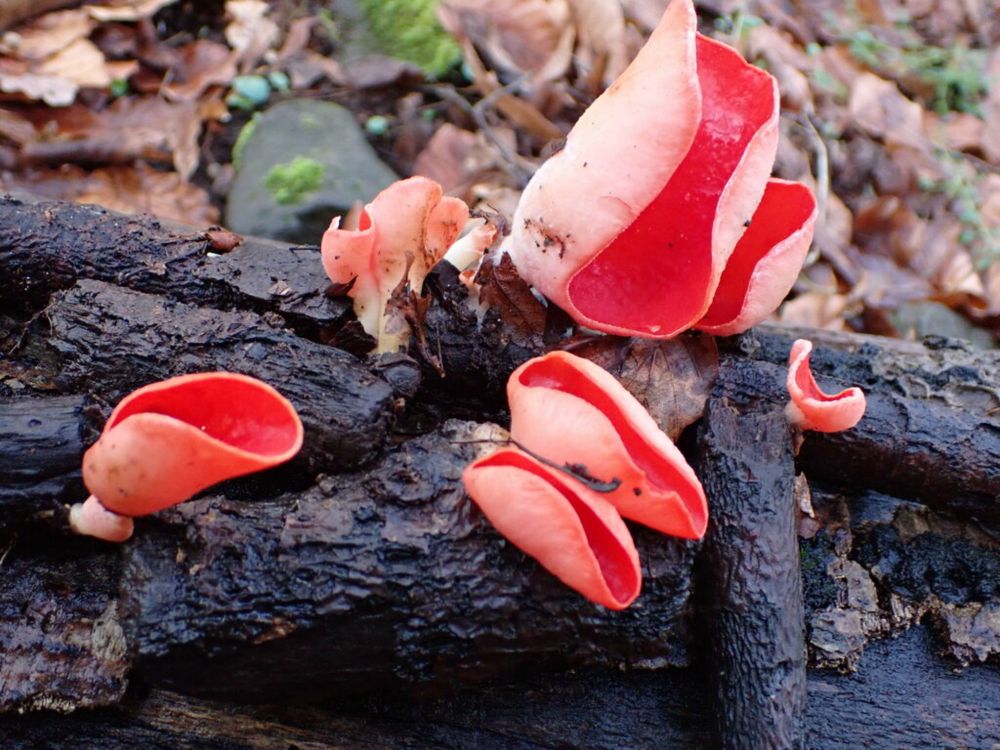
Mycology Corner
@mycologycorner.bsky.social
Biology student passionate about everything fungal and fungi-like. Special interest in macrofungi, (plant) parasites and aquatic fungi. Central Europe.
https://www.inaturalist.org/people/mangoblatt
https://www.inaturalist.org/people/mangoblatt
That's how I identify Inocybaceae. ;)
November 10, 2025 at 9:44 PM
That's how I identify Inocybaceae. ;)
You are completely right. I usually don't bother with them since I fear that they need sequencing. In this case it's quite easy, though. This species looks just like A. lividopallecens but has (sub-)globose spores instead of ellipsoid ones.
November 10, 2025 at 9:01 PM
You are completely right. I usually don't bother with them since I fear that they need sequencing. In this case it's quite easy, though. This species looks just like A. lividopallecens but has (sub-)globose spores instead of ellipsoid ones.
Are you sure? This looks like Dacrymyces to me, maybe sth like D. chrysospermus. Tremella mesenterica usually forms only one or two gelatinous blobs, not more than a handful smaller ones. Also, Tremella mesenterica is a mycoparasite, infecting Peniophora species, and I'm not seeing any Peniophora.
November 9, 2025 at 9:22 PM
Are you sure? This looks like Dacrymyces to me, maybe sth like D. chrysospermus. Tremella mesenterica usually forms only one or two gelatinous blobs, not more than a handful smaller ones. Also, Tremella mesenterica is a mycoparasite, infecting Peniophora species, and I'm not seeing any Peniophora.
very interesting! i'll keep an eye open.
December 22, 2024 at 2:41 PM
very interesting! i'll keep an eye open.
This is a species of genus Arrhenia. Very common moss symbionts/parasites.
December 22, 2024 at 2:37 PM
This is a species of genus Arrhenia. Very common moss symbionts/parasites.
you're welcome ;)
December 21, 2024 at 9:33 PM
you're welcome ;)
There are a few globally distributed species in the Lycogala epidendrum complex which -- unfortunately -- make it impossible to ID those observations to species level without electron microscopy or genetic analysis. dx.doi.org/10.1127/nova...
Another species complex in myxomycetes: diversity of
peridial structures in Lycogala epidendrum
- Nova Hedwigia Band 114 Heft 3-4 — Schweizerbart science publishers
dx.doi.org
December 21, 2024 at 4:22 PM
There are a few globally distributed species in the Lycogala epidendrum complex which -- unfortunately -- make it impossible to ID those observations to species level without electron microscopy or genetic analysis. dx.doi.org/10.1127/nova...
those belong to genus Lachnum
Microscopy is required for species ID
Microscopy is required for species ID
December 19, 2024 at 8:22 PM
those belong to genus Lachnum
Microscopy is required for species ID
Microscopy is required for species ID
This is a Sarcoscypha species, but microscopy would be needed to identify it up to species level. more information (links to north american species included): www.inaturalist.org/posts/90070-...

Sarcoscypha spp. in Europe
In late winter and early spring, beautiful red cup fungi of genus _Sarcoscypha_ can be found growing on fallen twigs and branches. In Europe, there are three possible species (four if you include _S. ...
www.inaturalist.org
December 17, 2024 at 1:59 PM
This is a Sarcoscypha species, but microscopy would be needed to identify it up to species level. more information (links to north american species included): www.inaturalist.org/posts/90070-...

